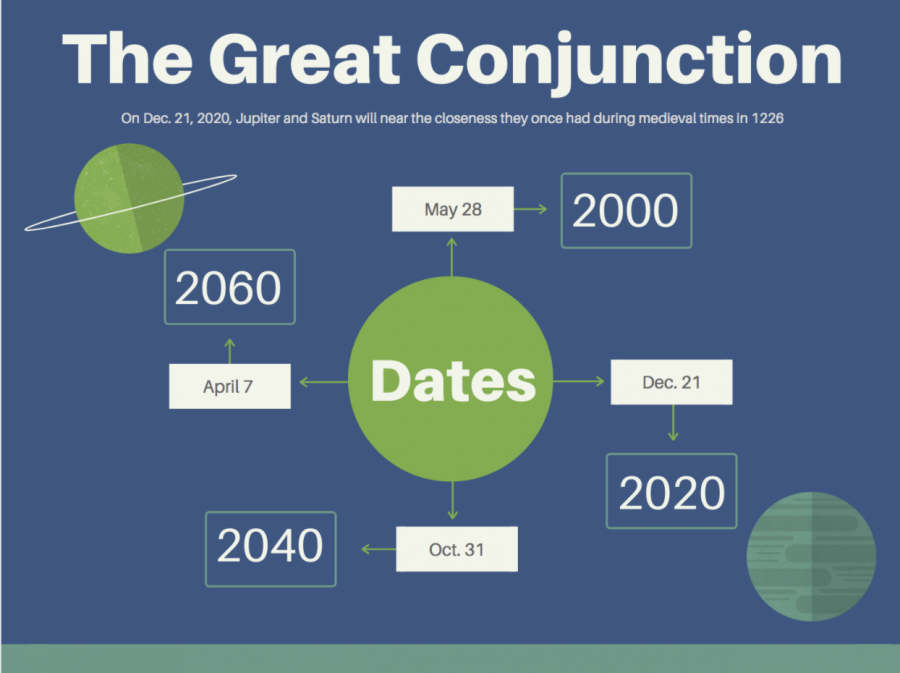The Great Conjunction: Enter the Jupiter and Saturn function
For more information on the Great Conjunction, see EarthSky.com, a website about the cosmos.
December 20, 2020
The Eta Aquarid meteor shower, penumbral lunar eclipse and the Southern and Northern Taurids meteor showers have all occurred this year, according to Astrotourism. Soon, the Great Conjunction will make its entrance on Dec. 21, bringing Jupiter and Saturn within 0.1 degrees of each other.
“[Scientific] experiences are important because events like the Great Conjunction allow astronomers to get a better understanding of other planets and their orbits,” sophomore Lucy Sherrier said.
In scientific terms, a conjunction is when objects or planets in space appear to come into the same vicinity. In reality, they are still millions of kilometers away from each other, according to Royal Museums Greenwich. The Great Conjunction differs from other conjunctions due to its level of precision. Though the last Great Conjunction was on May 28, 2000, it hasn’t been this precise since 1623, according to EarthSky
“Watching these planets of unimaginable sizes come so close and move away can be amazing, [considering] how the universe works,” sophomore Siddharth Dhadi said.
According to NPR, Jupiter requires less than 12 years to circle the sun while Saturn’s orbit takes 29 years, which causes the two planets to meet about every 20 years. Because the Great Conjunction can be at home with the naked eye, this event doesn’t require a telescope and is open to anyone with a view of the sky.
“Experiences like these can inspire young individuals to explore the fields of science,” Dhadi said.
There are comparisons being drawn between the Great Conjunction and the Christmas Star because the conjunction occurs four days before Christmas. In addition, the star of Bethlehem signaling the birth of Jesus Christ is now believed to have also been a planetary conjunction, according to NBC.
“It’s amazing that we can see what other celestial bodies in the universe look like to some extent,” Sherrier said.
According to EarthSky, the next Great Conjunction will be on Oct. 31, 2040. Additionally, another conjunction this precise isn’t expected until 2080, according to NPR. According to The Planetary Society, the Great Conjunction appears as two bright dots low in the southwest, best viewed an hour after sunset
“This event might give people hope that a rare miracle can happen,” Dhadi said.





